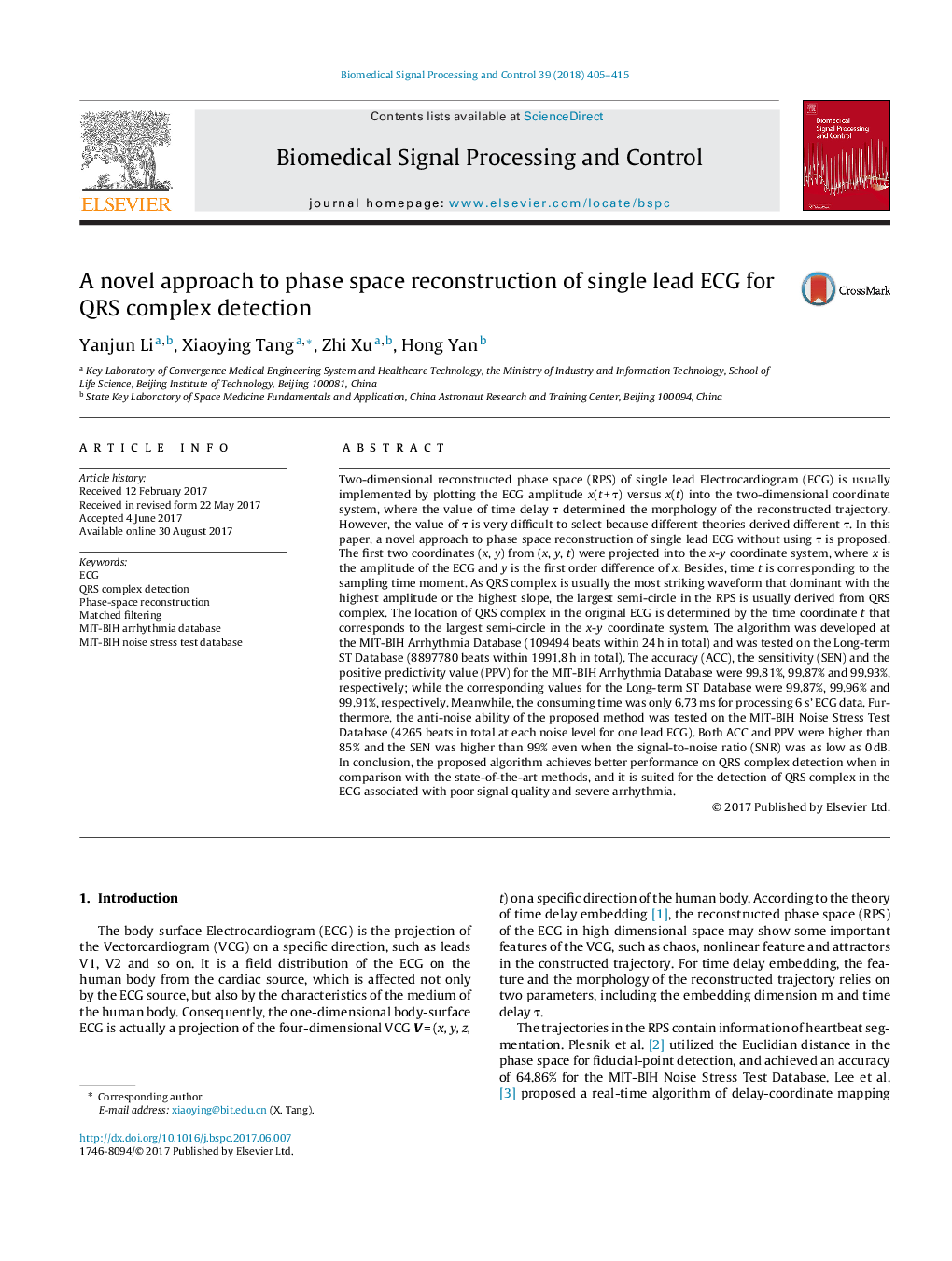| کد مقاله | کد نشریه | سال انتشار | مقاله انگلیسی | نسخه تمام متن |
|---|---|---|---|---|
| 4973497 | 1451641 | 2018 | 11 صفحه PDF | دانلود رایگان |

- A novel approach to reconstructed phase space (RPS) of single lead ECG is proposed for QRS complex detection.
- Traditional two-dimensional RPS (x(t), x(t + Ï)) is improved as three-dimensional coordinate (x, y, t). The third parameter t is an indispensable time index to locate the position of QRS complex.
- The algorithm was tested on three public benchmark databases, including the MIT-BIH Arrhythmia Database, the Long-term ST Database and the MIT-BIH Noise Stress Test Database.
- The proposed algorithm achieved better performance on QRS complex detection when in comparison with the state-of-the-art methods.
Two-dimensional reconstructed phase space (RPS) of single lead Electrocardiogram (ECG) is usually implemented by plotting the ECG amplitude x(t + Ï) versus x(t) into the two-dimensional coordinate system, where the value of time delay Ï determined the morphology of the reconstructed trajectory. However, the value of Ï is very difficult to select because different theories derived different Ï. In this paper, a novel approach to phase space reconstruction of single lead ECG without using Ï is proposed. The first two coordinates (x, y) from (x, y, t) were projected into the x-y coordinate system, where x is the amplitude of the ECG and y is the first order difference of x. Besides, time t is corresponding to the sampling time moment. As QRS complex is usually the most striking waveform that dominant with the highest amplitude or the highest slope, the largest semi-circle in the RPS is usually derived from QRS complex. The location of QRS complex in the original ECG is determined by the time coordinate t that corresponds to the largest semi-circle in the x-y coordinate system. The algorithm was developed at the MIT-BIH Arrhythmia Database (109494 beats within 24 h in total) and was tested on the Long-term ST Database (8897780 beats within 1991.8 h in total). The accuracy (ACC), the sensitivity (SEN) and the positive predictivity value (PPV) for the MIT-BIH Arrhythmia Database were 99.81%, 99.87% and 99.93%, respectively; while the corresponding values for the Long-term ST Database were 99.87%, 99.96% and 99.91%, respectively. Meanwhile, the consuming time was only 6.73 ms for processing 6 s' ECG data. Furthermore, the anti-noise ability of the proposed method was tested on the MIT-BIH Noise Stress Test Database (4265 beats in total at each noise level for one lead ECG). Both ACC and PPV were higher than 85% and the SEN was higher than 99% even when the signal-to-noise ratio (SNR) was as low as 0 dB. In conclusion, the proposed algorithm achieves better performance on QRS complex detection when in comparison with the state-of-the-art methods, and it is suited for the detection of QRS complex in the ECG associated with poor signal quality and severe arrhythmia.
Journal: Biomedical Signal Processing and Control - Volume 39, January 2018, Pages 405-415